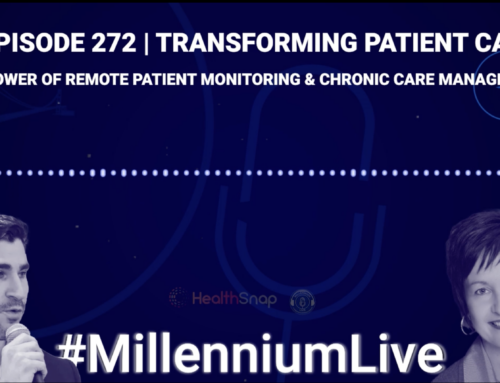More and more healthcare providers are adopting Remote Patient Monitoring (RPM) programs following the global pandemic. RPM is a burgeoning sector and according to one study, healthcare providers are investing in, or have already invested, in RPM platforms to manage chronic conditions and monitor patients.
Let us take a look at HealthSnap, the best remote patient monitoring platform, and its competitors, to find out how HealthSnap can provide the ultimate integrated virtual care solution with a unique combination of RPM software, hardware, and care management services.
HealthSnap
Miami-based HealthSnap facilitates chronic disease management using Telehealth, Remote Patient Monitoring, AI-driven virtual care delivery, population analytics, automated billing, and much more.
HealthSnap is an all-in-one integrated Virtual Care Platform that guides healthcare providers and their teams in improving patient health outcomes, reducing utilization, and adding new revenue streams. In short, HealthSnap provides a single platform for all your virtual care and chronic disease management needs.
HealthSnap is HITRUST-certified and uses cellular-enabled and pre-configured health devices, such as scales, blood pressure monitors, and glucose meters to help care team manage chronic conditions remotely. It also helps healthcare providers start and scale their RPM programs without interrupting their workflows. All HealthSnap technology is also fully in compliance with HIPAA regulations.
Recently, HealthSnap was selected as one of the topmost tech companies in the Southeast from a list of more than 400 applicants, and invited to present at Venture Atlanta conference 2021. The annual conference brings in the country’s top investment firms to hear the pitch from the best technology companies that it has been selecting for the last 14 years.
Vivify Health
Plano-based Vivify, founded in 2009, uses a remote care platform driven by consumer mobile devices and is a promising US-based digital health company. Vivify’s RPMg program utilizes health devices such as Bluetooth-enabled blood pressure cuffs and wireless weight scales.
Vivify is in the remote monitoring space that provides connected devices and other hardware to track at-risk patients at home. Such tracking and early intervention can help in reducing the number of patients having to rush to the emergency room, thus cutting major costs.
The market for such devices and technologies is growing fast, making the space attractive to bigger healthcare companies. As per a 2018 report, the remote patient monitoring system market could cross $30 billion globally, in another five years.
Optum, a division of UnitedHealthcare, the world’s largest health care company, acquired Vivify Health in 2019. UnitedHealthcare provides technology and business services, pharmacy benefits management, and several other services.
Optimize Health
Seattle-basedOptimize Health develops a patient engagement and tracking platform aimed at facilitating a clinician’s patient monitoring. The founders of Pillsy, a healthcare company that specialized in remote patient support, founded Optimize Health in 2015.
As a provider of a digital healthcare platform enabling RPM program deployments, Optimize Health improves care access and patient health outcomes while curtailing healthcare costs by combining monitoring devices and a HIPAA-compliant digital platform.
Choose the Best Remote Patient Monitoring Platform
Real-time and continuous patient health data is driving improved clinical outcomes while lowering healthcare costs across the board for healthcare providers and organizations.
HealthSnap has quickly risen to be a leading virtual care platform by increasing patient engagement, reducing utilization, and opening up new revenue streams to deliver customized patient experiences.
Call us today at 888-780-1872 or click here to request a consultation to see how HealthSnap can help you improve your patient and financial outcomes.












Leave A Comment
You must be logged in to post a comment.